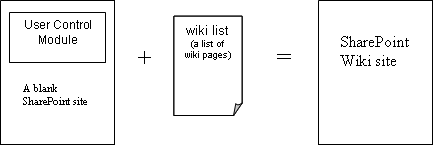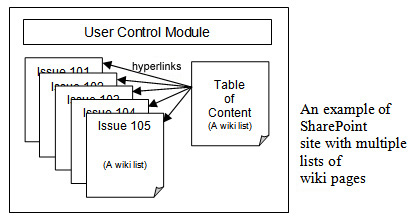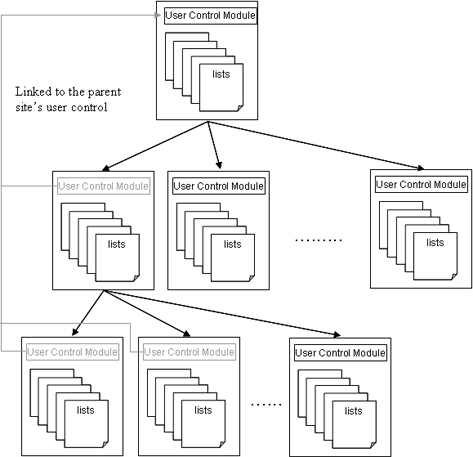Microsoft Windows SharePoint: A Web 2.0 Environment in CityU
Introduction
With the advancement of broadband internet services and the availability of huge storage devices at low cost, a new trend of World Wide Web technology, Web 2.0, becomes more and more widely used. Web 2.0[1], as defined by Dario de Judicibus, “is a knowledge-oriented environment where human interactions generate contents that are published, managed and used through network applications in a service-oriented architecture”. The well-known online encyclopedia on the web, Wikipedia, is one of the distinguished examples of Web 2.0. Instead of providing contents by a small group of experts, Wikipedia allows any people on the net to contribute. Its articles are written and being edited/updated by people all over the world. This makes its library grow dramatically and become the largest general reference work currently available on the Internet. As of December 2007, Wikipedia has approximately 9.25 million articles in 253 languages! YouTube, MySpace, and Facebook are all well-known examples of Web 2.0. The impact of Web 2.0 makes Time Magazine declare “You” as the TIME’s Person of the Year 2006. Web 2.0 is a “tool for bringing together the small contributions of millions of people and making them matter ... it’s really a revolution”. – TIME (TIME’s Person of the Year 2006, issue Dec 2006)
In view of popularity of Web 2.0, the Computing Services Centre (CSC) recently tested the most common Web 2.0 platforms, such as MediaWiki, TWiki, and Microsoft SharePoint products to see if any of them is suitable to be used as the Web 2.0 environment in CityU. The CSC finally chose the Microsoft Windows SharePoint Services 3.0 as CityU’s first Web 2.0 environment for the following reasons:
-
Close integration with MS Office products, such as Word, Excel, SharePoint Designer 2007;
-
Better database management;
-
Better users’ control by integrating with Central Windows Domain Servers to provide single sign-on support for LAN users;
-
Customizable to have wikis, blogs, document libraries, photo libraries, calendars, tasks lists, discussion boards, team sites, etc. within a single site collection;
-
Contents and functions of Microsoft SharePoint Services 3.0 are upward compatible with the Microsoft Office SharePoint Server 2007. Users may consider upgrading to the latter anytime for more advanced functions such as enterprise search, portal, workflow, business intelligence, etc. (ref: [3])
Windows SharePoint Services 3.0 Overview
Windows SharePoint Services 3.0 (WSS 3.0) is a web-based tool that helps you collaborate and communicate efficiently with your team members. With WSS 3.0, you may
-
log progress of tasks, happening of events, and etc. with blog;
-
share knowledge/information with wiki;
-
manage documents in a common repository of document storage, which support features, such as folders, versioning, check out, and integration with Microsoft Office;
-
exchange ideas using discussion board;
-
keep track of on-going tasks with task list;
-
mark upcoming meetings, deadlines, and other important events with calendar;
-
make announcements to site users;
-
conduct surveys to collect site users’ opinions;
-
control users’ access with Windows domain user accounts;
-
and more…
With Microsoft Office SharePoint Designer 2007, web designers can also customize SharePoint sites, and build reporting tools and applications tailored to specific tasks without writing or deploying new code. IT professionals can tailor or extend the WSS foundation to create their own web-based tools and services specific to their needs.
SharePoint sites are flexible and highly customizable. You may create a SharePoint site with only a blog, or wiki. You may also create a SharePoint site collection with several levels of SharePoint sites to meet different needs of different group of users.
Structure of SharePoint Sites
In WSS 3.0, “components” like wikis, blogs, document libraries, and etc., are called “lists”. A SharePoint Wiki site, for example, is actually a blank SharePoint site with a wiki list created on it.

Multiple lists, such as: wiki, documents library, tasks list, calendar, and etc., can be created simultaneously on a single SharePoint site. . You may even have multiple wiki lists on a single site. These maybe useful if you would like to use wiki to publish newsletters and store issues of newsletters in separated wiki lists.

Besides lists, each SharePoint site can also have multiple subsites, and subsites themselves can have multiple subsites, further down as many levels as a user desires. Each subsite can have independent user access control, or inherit user access control from its parent site. As such, users can use the top-level site and subsites to divide site contents into distinct, separately manageable sites for use by different groups. Thus SharePoint sites are highly customizable and flexible. They can meet most of the usage demands of Web 2.0 technology.

Conclusion
With the Windows SharePoint Services, you may build as simple as a plain blog or wiki site; but also with its highly customizable and extensible features, you may build rich, flexible, and scalable Web-based applications and Internet sites specific to your needs. Its close integration with Microsoft Office and Windows Servers also give you better editing tools and user control.
Reference
1. Windows SharePoint Services 3.0
2. Windows SharePoint Services 3.0 Technical Library
3. Microsoft SharePoint 2007 Edition Comparison
-----------------------------------------------------------------------
[1] As discussed in the previous issue of Network Computing, depending on one’s focus, different people may have different definition of Web 2.0. Please refer to the article for details.